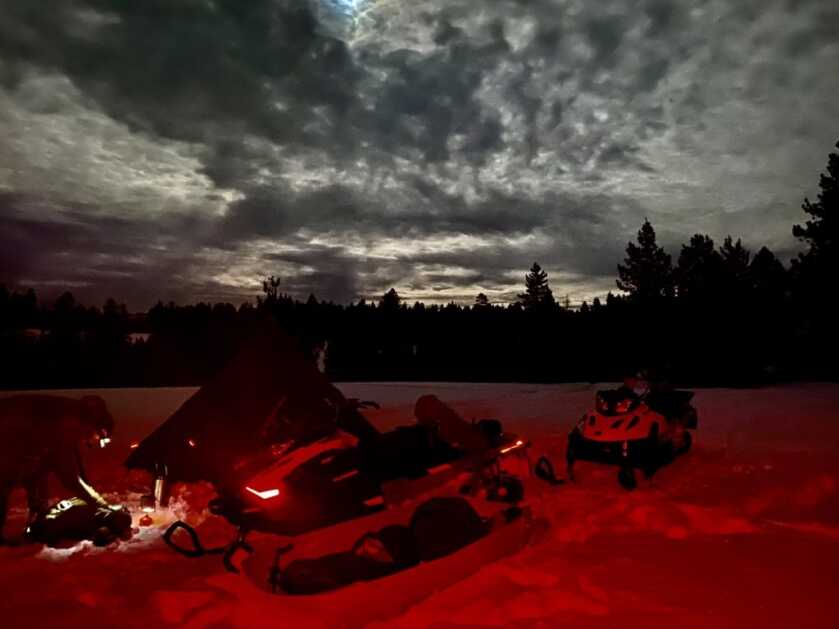The name of this publication isn’t “hunt for a week or two in the fall.” It’s HUNT365. If you live in a place with snow, you better be able to navigate it, otherwise your hunts are going to be restricted to places awfully close to home, or worse yet, put on hold until the season changes.
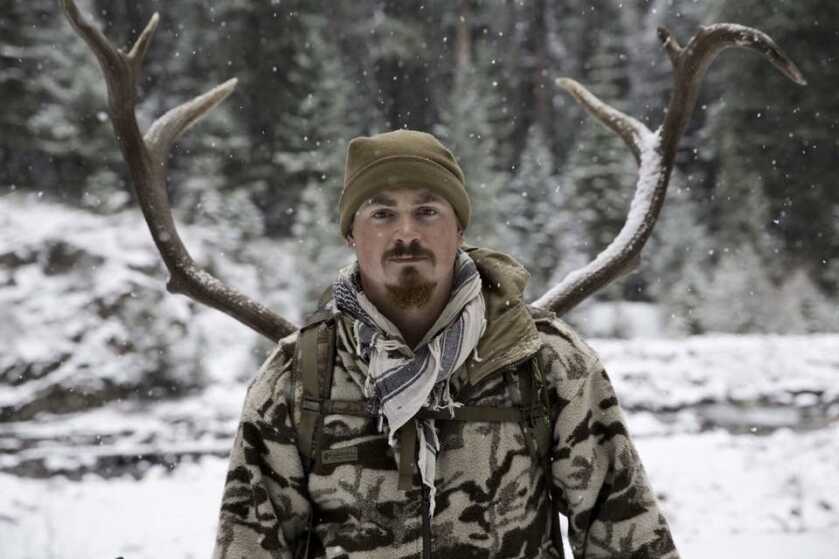
We have a large number of options available today for methods of efficient travel over snow and I’m going to take you through the pros and cons of each that I’ve experienced.
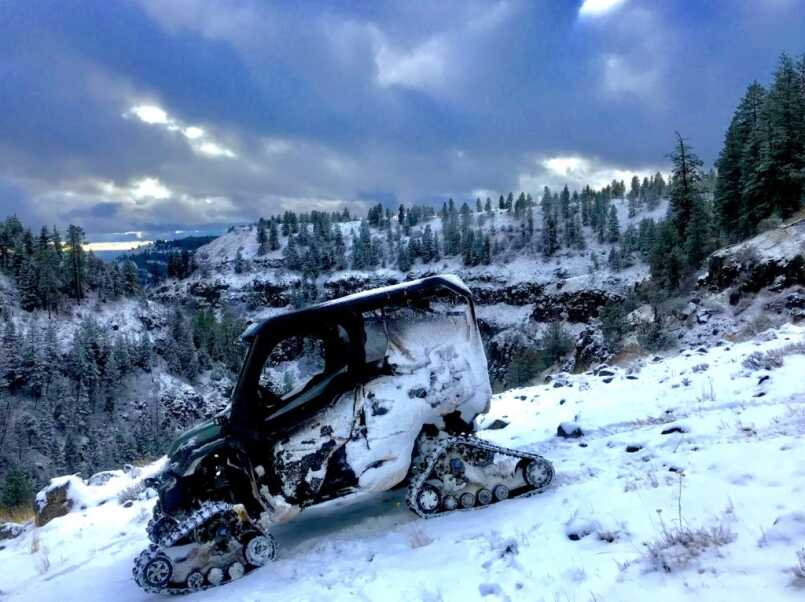
TRACKED SIDE-BY-SIDE
One of the most utilitarian options available is the tracked side by side. These UTV’s are wonderfully functional on tires in the dry months, but when the snow gets deep, they become useless without tracks. My tracks come from Camso and are geared specifically for this Honda Pioneer 1000-5. I originally purchased the tracks for a Yamaha Viking with around 30% less horsepower, but converting the tracks to the Honda was as easy as ordering some inexpensive adapters and a new sprocket. I have never gotten stuck with my tracks on, but the best way to do it is to get high-centered on a log. Getting out of this scenario requires a shovel, saw, and some field-expedient ramps. A winch should be considered mandatory if you are going to add tracks to your UTV. The traction is amazing, I’ve pulled 3/4 ton trucks out of the snow with my tracks on. The new products from Can-Am are the most impressive UTV’s I’ve used both in terms of performance as well as fit and finish, if you want the best machine available today, that’s where to look.
Pro’s: You can go over snow, mud, rock, gravel— pretty much whatever. In the springtime when roads are drifted-in but have long stretches of bare ground or mud in between, this is the only vehicle I’ve found that can conquer it all. You have bed space in the back for gear, and room in the cab for passengers. You may also add an enclosed cab and a heater for a comfortable ride. You’ll have two vehicles in one because when the ground hardens in the summer you can put the tires back on. I’ve had my tracks for five years now and besides replacing some minor parts they are doing great.
Con’s: Your speed will be reduced by 30-50% depending on the displacement of your engine and the sprocket that drives the tracks. Your fuel efficiency will be reduced by 50-60%. With the relatively small tanks in UTV’s that can mean you are out of gas quickly, bring an extra jug with you (ask me how I know.) There is some cost in maintenance and off-season storage of the tracks, but it’s not the end of the world.
Cost: Around $5k for the tracks + cost of installation
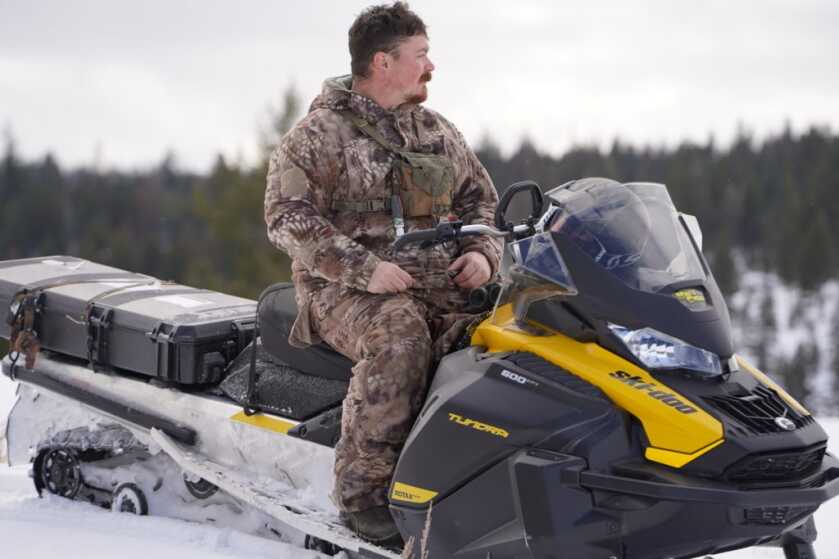
SNOWMOBILE
Snowmobiles have come a long way since I first started riding them. My high school wrestling team once rode 60 miles over our local mountain range to a tournament. The bus ride was a much longer route and took twice the time. By the end of it, the sleds and the wrestlers were largely broken, but it became one of my favorite sports memories. The snowmobiles I use now are not the double turbo nitro injected rocket ships you see climbing near-vertical hills, but are the humble and dependable Ski-doo Tundras. A hunter requires to float in all kinds of snow conditions, go slowly, and occasionally drag a pull-behind sled full of traps, guns, and gear. Used Tundras are hard to find because they last a long time and owners don’t want ever want to get rid of them. They can get up and go 70+ miles per hour on a packed surface but are happy to go 10 mph or slower without overheating. You can expect 9-11 miles per gallon, which gives you roughly 100 miles of range without having to refill. There are other utility snowmobiles from other manufacturers that probably work great, I’m just not going to recommend something I don’t personally know about. Other niceties about these machines are the electric start, heated grip and throttle, rugged suspension, and a comfy seat.
With any of these snow travel options, keeping your rifle and optics protected is a must. Snow tends to get everywhere. Find a gun you can fit inside your pack like the Sig Sauer Cross rifle. On New Year’s Eve a few weeks ago I snowmobiled into a remote area at night when temps were -23 F. I got off the sled, stepped into my skis, and slid down the trail a ways to a coyote stand. I was using an AR-15 with a carbine stock and the aluminum of the buffer tube, evidently, was also roughly -23. As I scanned with the rifle looking though my Sig Echo3 thermal optic, I made the unfortunate error of letting my mustache freeze solidly to the buffer tube. If you are going to be hunting in the sure enough cold, know that some really comedic things might happen.
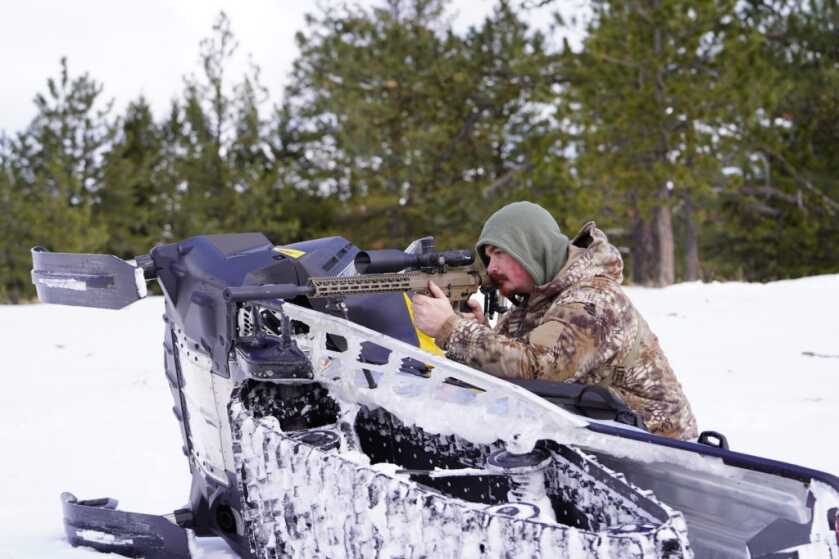
Pro’s: The snowmobile allows you to go fast and far on all kinds of snow and take on hills the tracked UTV can’t pull. You can go off-trail and fit between most* trees. The maintenance on both the electric fuel-injected and carbureted two strokes models is exceptionally low. Snowmobiles are incredibly fun.
Con’s: Snowmobiles can seat a passenger but it makes steering difficult and is cumbersome. You need more specialized gear to ride with to keep you safe and comfortable than in a UTV. If getting off and shooting quickly is part of your game, accomplishing a decent cheek weld to your rifle with a helmet on is tricky. Riding a sled is a skill that must be developed. Without a pull-behind, you may struggle to store enough gear for your hunt, traps, and camp on the vehicle. Snowmobiles are much easier to get stuck than a tracked UTV (mostly because of the places you’ll be tempted to ride.) Something about them encourages risky behavior, so responsible riding can be a challenge for us red-blooded types. I did mention that they are fun?
Cost for a new Tundra: $8k-$9k
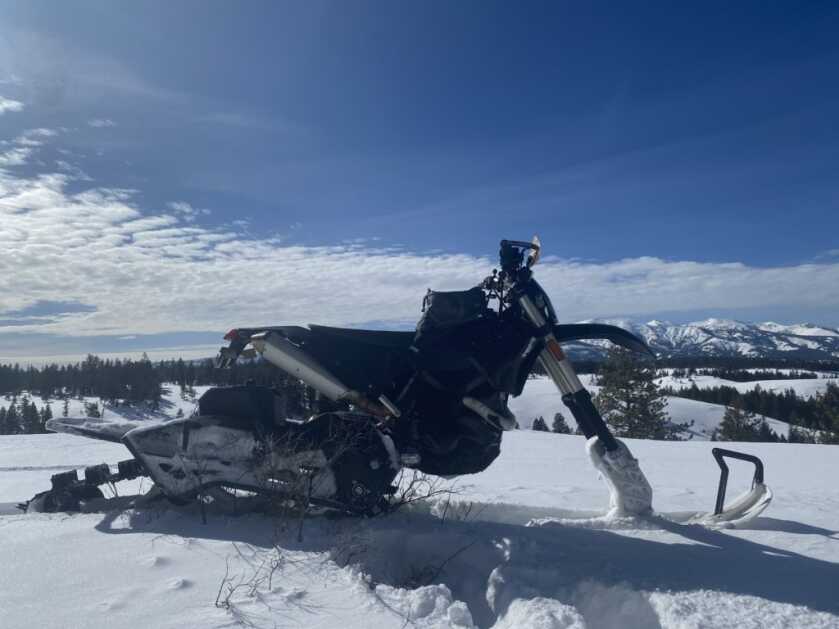
SNOWBIKE
Within nearly the same category is the snowbike. This is a dirt bike that has had its front wheel replaced with a ski and the rear wheel and swing arm replaced with a track. If you know how to shift a motorcycle, a snowbike is easier to ride than a snowmobile. I used an old KTM450 EXC to build on, and again used a Camso track. I had to modify the air intake, front forks, and headlight. I also added heated grips. Because the gas tank is so small I carry an extra 2.5 gallons on the small deck above the track. This is the least utilitarian option because you cannot bring a passenger and there is very little space for gear. However, you can more easily go on steeper slopes and through tighter timber on the snowbike than you can with the other two options. If you decide to build a snowbike, consider 450cc the minimum and make sure it has electric start and fuel injection. Kick-starting a cold bike in deep snow with a carburetor that wishes it was at another elevation is a sweaty and frustrating experience.
Pro’s: You can ride figure 8’s on a steep sidehill without having to throw your weight around like a madman the way you do on a snowmobile. When they get stuck, they are much easier to get back out again. You can turn it back into a dirt bike in the summer. If you are setting a trapline, especially snares, this is a powerful tool.
Con’s: Your range is limited. Snowbikes tend to get tossed around on groomed or rutted trails and really like clean fresh snow. It’s hard to bring much gear with you, and if trapping, you will have to skin in the field. Definitely a skill requirement, and you need specialized safety gear. If your snowbike breaks down, towing it out can be a real challenge. Doesn’t have reverse!
Cost: Tracks are around $3,500-$7k + the other conversion parts and the motorcycle.
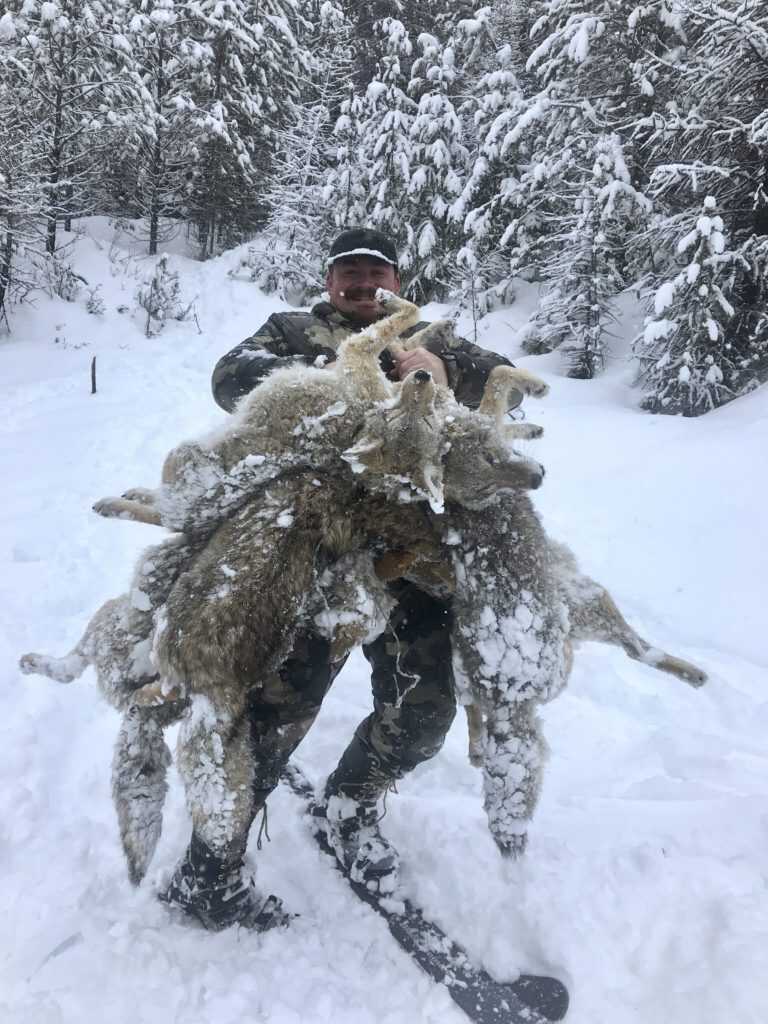
SKIS
When you think about Cross country skis you might imagine some 6’7” modern-day Viking on skinny skis burning down a course in the Olympics, but there is another more practical version available for winter travel– these are a style of skis called Hoks originating from the Altai mountains of Mongolia that hunters have used there for centuries. Hunters in the Altai use a single pole that doubles as a spear for travel on skis as well as while hunting on skis. Hok skis are shorter and wider than the boards you may be used to and employ “skins” to aid in climbing. There are a couple of commercial versions available today that make life easy. I use the Black Diamond Glidelite 147’s. These skis have permanent skin in the middle third of the bottom, metal edges that help with turns, and come with a universal binding so you can use a hiking boot. The universal binding isn’t rugged enough for serious use. Instead, get a NNN BC binding, for around $70 and screw it into the skis. NNN BC boots are nice because they have a lot of the features you’re used to from a good hunting boot, except they have a metal bar in the toe that clips into the binding. The ones I like the best are Alpina Alaskas. The “skin” is a synthetic fiber material that points from the front towards the back of the ski, it allows you to slide forward, but provides really good traction once you step down. Altai skis used hair on horsehide for their skins. I find climbing slopes of 20 degrees or less to be more efficient with these skis than climbing the same slope with boots on dry ground. Skis are a quiet and efficient means of snow travel and provide even better flotation than snowshoes. My favorite combo is to snowmobile or take the tracked UTV into an area, then get on my skis and go a mile or two into the place I intend to hunt.
Pro’s: Efficient travel. What feels like a slow-motion walk can easily be a 3-4 mph travel speed. They are relatively easy to learn how to use on flat ground. You are basically just walking. Much quieter than a combustion engine. Gentle downhills are effortless.
Con’s: No fun on a steep downhill, they just don’t have enough control. Some skill is required, but you’ll pick it up quickly. Requires special boots. You have to carry on your back whatever you want to bring. Not great on ice.
Cost: boots, skis, bindings and poles will cost you under $1k
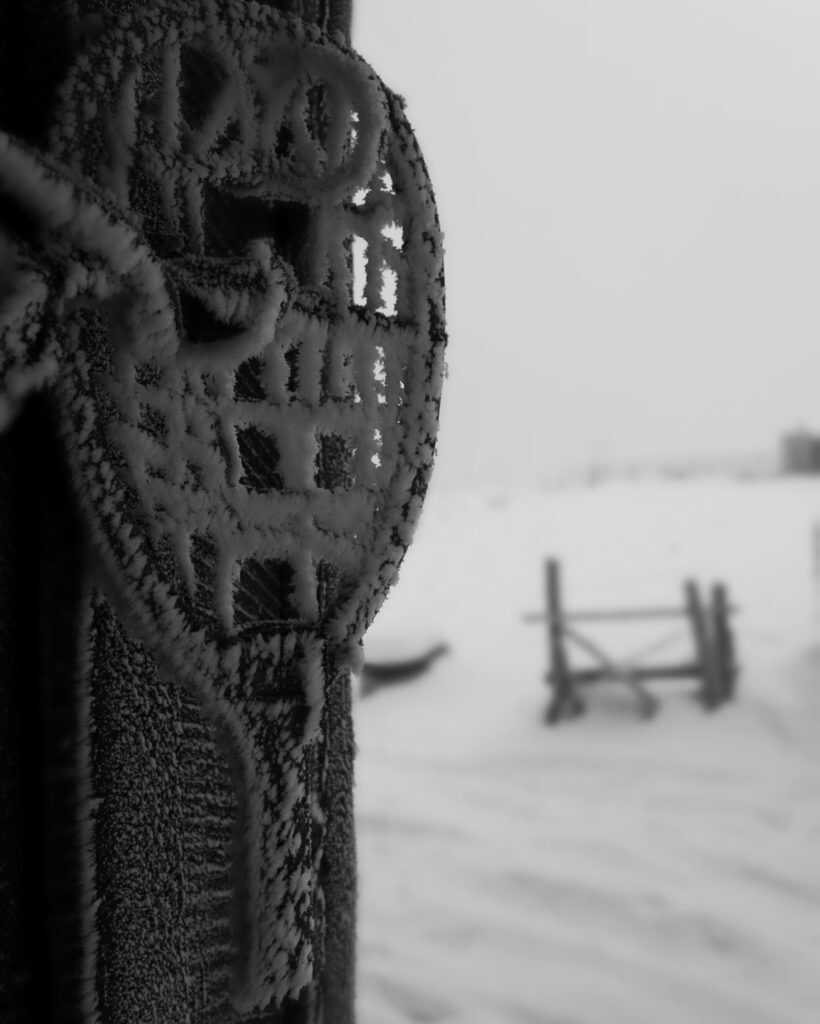
SNOWSHOES
I have an interesting relationship with snowshoes. Mostly, I hate them. But what I hate more than using them is needing them and not having them. Snowshoes are loud, slow, and cumbersome. They also do not go in reverse. However, they are affordable and WAY better than post-holing through knee or hip or chest-deep snow. The advantage they have over the skis is that they take up less room, have less of a learning curve, and can climb or descend steeper slopes with more control. The ones I use are MSR brand and I have the tail attached for more floatation. Because mechanical tragedies and tree collisions can happen with any motor vehicle, I always bring either skis or snowshoes with me. Skis take up more room, so strapping a pair of snowshoes to your pack is good insurance in case you have to walk home.
Pro’s: Light, inexpensive, provide floatation in most snow conditions, and easy to learn how to use.
Con’s: Snowshoes are just a lot of work to get places, so they aren’t nearly as efficient as skis in many situations. That’s basically it— you are going to sweat your bullets off, but snowshoes are better than nothing by a lot.
Cost: $200-ish
If you are going out in the snow make sure you are being safe. Tell someone where you are going, when to expect you back, and when they should call search and rescue. Wear gear that keeps you warm when you are wet. Bring a good way to start a fire and a light source. A shovel, saw, hatchet, and knife are mandatory. Water will freeze if uninsulated, so bring what you want to drink in a thermos. A power play is to skip the coffee and instead have a thermos full of beef broth. This will replace salt in your body, tastes wonderful, and won’t increase your dehydration the way coffee does. Sometimes it’s hard to find a buddy dumb enough to go hunting and trapping when snow is measured by the foot, but misery loves company and you’ll be much safer with a friend. Go ahead and hunt 365.
